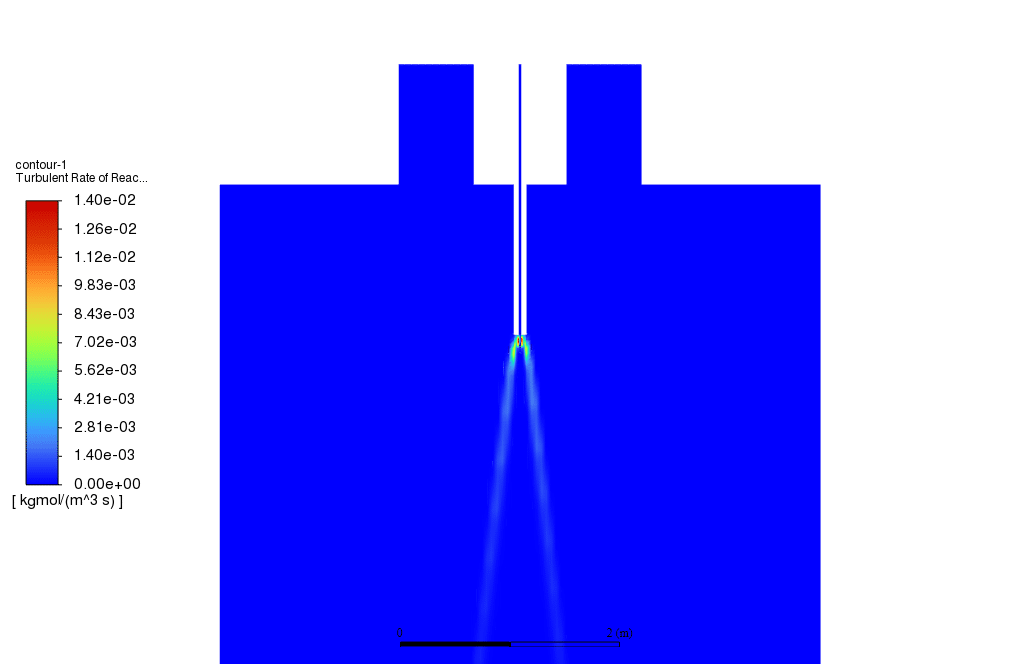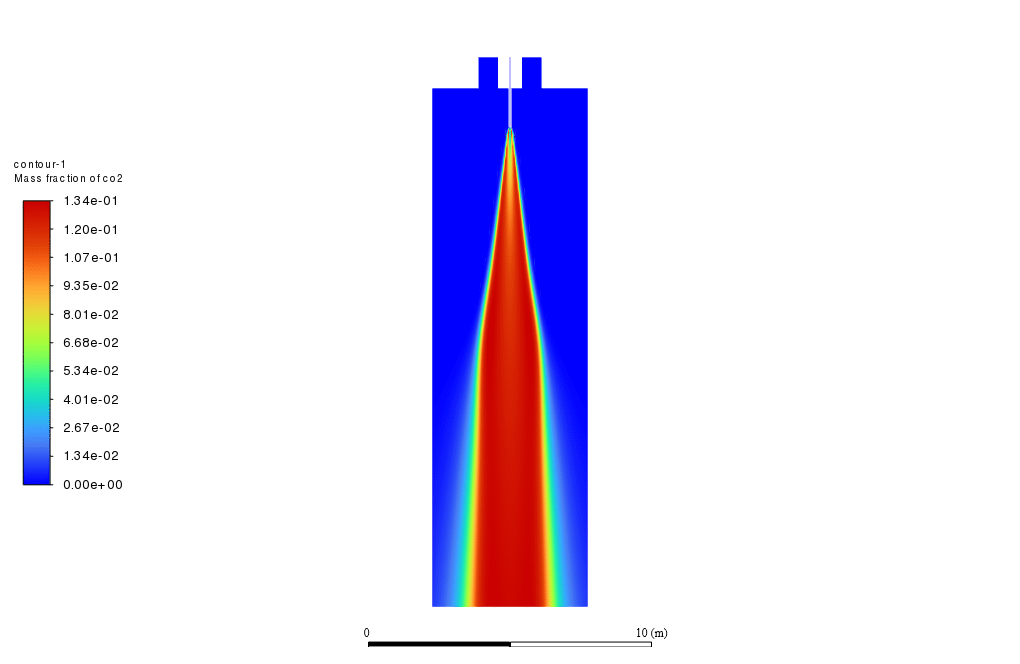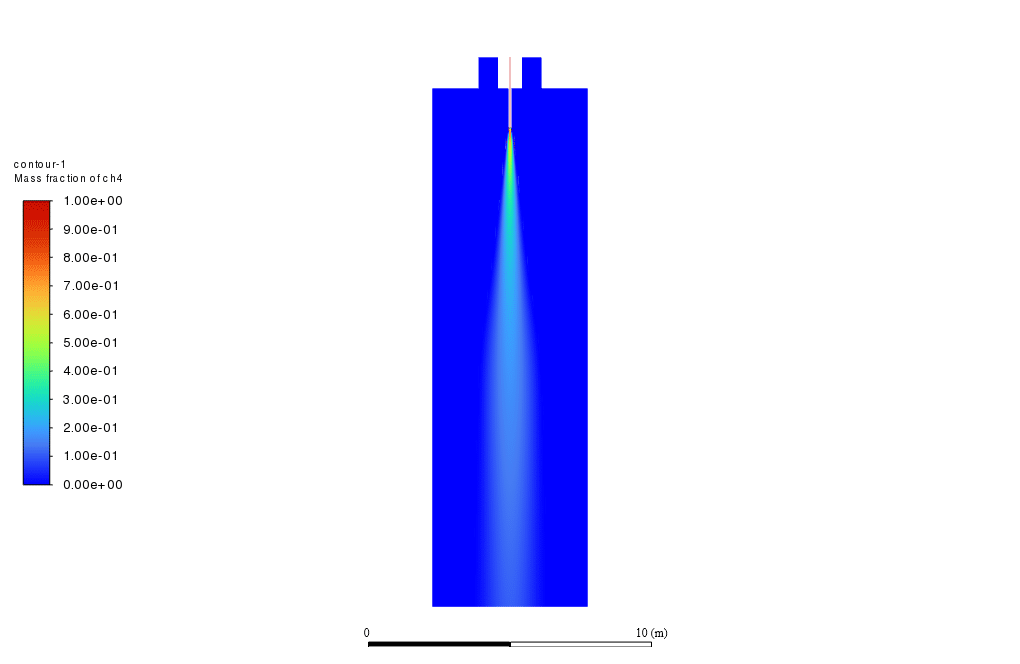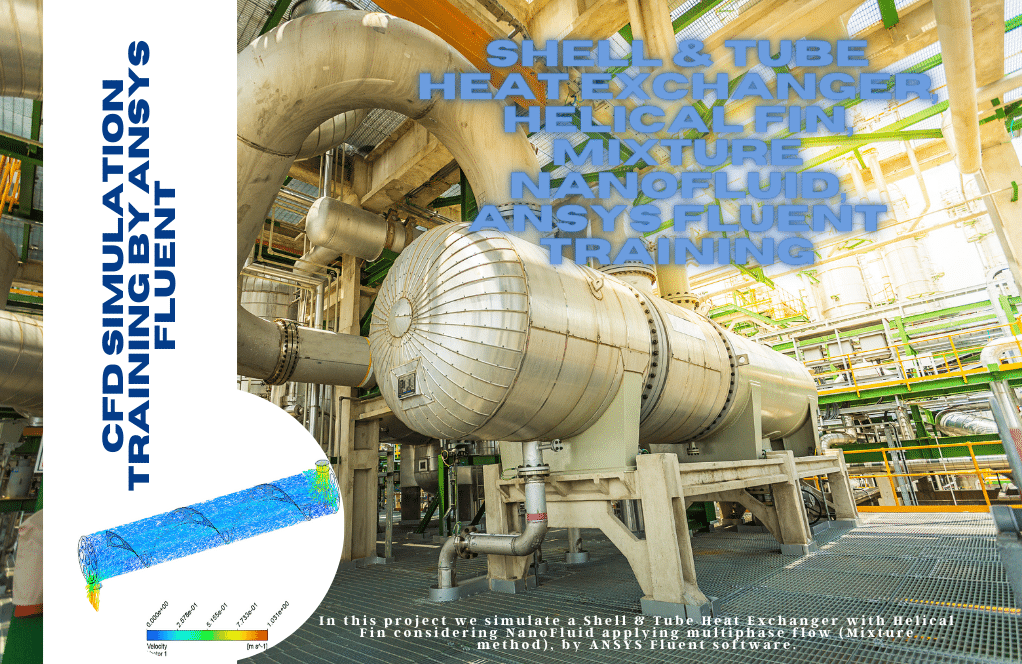Non-Premixed Combustion, Eddy dissipation, ANSYS Fluent CFD Training
$140.00 $70.00 Student Discount
- The problem numerically simulates the Non-Premixed Combustion in a combustion chamber using ANSYS Fluent software.
- We design the 2-D model with the Design Modeler software.
- We mesh the model with ANSYS Meshing software.
- The mesh type is Structured, and the element number equals 63280.
- We use the Species Transport model to define a Combustion reaction.
- We select the Eddy Dissipation mode for the turbulence chemistry interactions.
To Order Your Project or benefit from a CFD consultation, contact our experts via email (info@mr-cfd.com), online support tab, or WhatsApp at +44 7443 197273.
There are some Free Products to check our service quality.
If you want the training video in another language instead of English, ask it via info@mr-cfd.com after you buy the product.
Description
Description
The present problem simulates the non-premixed combustion in a combustion chamber by ANSYS Fluent software. In the present case, it is assumed that the fuel and air enter the chamber from two separate boundaries and hence are considered Non-Premixed.
The geometry of the present model is two-dimensional and has been designed using Design Modeler software. We do the meshing of the present model with ANSYS Meshing software. The mesh type is Structured, and the element number is 63,280.
This CFD project is the 2nd episode of the Combustion Training Course.
Non-Premixed Combustion Methodology
The Species Transport model is used to model the combustion process. The one-reaction methane-air mixture is selected, and the volumetric option is used to model combustion in the chamber. Also, the Eddy Dissipation model is enabled to account for the turbulence chemistry interactions.
Also, the Energy Equation is On to calculate the changes in temperature due to the combustion process, and the viscous is set as the Standard k-epsilon model.
Non-Premixed Combustion Conclusion
After the simulation process was finished, contours such as temperature, velocity, different species’ mass fractions, and streamlines are obtained. As shown in the temperature contour, the temperature has clearly increased in the chamber indicating that the combustion has taken place.
Also, the formed secondary flows in the chamber are shown in the streamlines. These secondary flows have the role of increasing the mixing process between fuel and air and hence enhancing the combustion process.











Dr. Dillan Hills –
What kind of support is available if I encounter problems while trying to replicate the simulation steps for the non-premixed combustion scenario?
MR CFD Support –
If you encounter any problems while replicating the simulation steps, MR CFD provides support through various channels such as email consultations, detailed instructional materials, and sometimes even video tutorials that guide you through the simulation process. You can reach out to their support team with specific queries regarding your simulation scenario.
Mr. Kennedi Brown –
This product made understanding the complexities of non-premixed combustion so much more accessible. The step-by-step guidance through the simulation setup was incredibly helpful, and the visualization of temperature contours and species mass fractions effectively illustrated the combustion process.
MR CFD Support –
Thank you for your favorable review! We are ecstatic to hear that our training was able to clarify the intricate details of non-premixed combustion for you. Our priority is to provide comprehensive simulation instructions along with powerful visualization tools, and we’re delighted that it enhanced your understanding. Your insights about the value added by the streamlines and the secondary flows’ role in the combustion process are much appreciated.
Paxton Waelchi –
I am thoroughly impressed with the Non-Premixed Combustion, Eddy dissipation, ANSYS Fluent CFD Training – Episode 2 from MR CFD. The quality of the tutorial and the depth of knowledge presented allowed me to fully grasp the complexities of non-premixed combustion processes. The detailed explanation of how the Species Transport model integrates with the Eddy Dissipation model to accurately simulate the chemical and turbulence interactions was exceptional.
MR CFD Support –
Thank you for your positive feedback! We’re glad to hear that our Non-Premixed Combustion training provided you with a comprehensive understanding of the combustion process and turbulence interactions. Your understanding of the complex topics confirms the effectiveness of our educational approach. If you need further assistance or have any questions in the future, please do not hesitate to reach out to us.
Miss Libby Schulist III –
The training material was very comprehensive. As someone new to combustion simulations, I found the step-by-step guidance through the non-premixed combustion process extremely useful. I could clearly understand how the fuel and air are modeled to enter the chamber separately and the role of the Eddy Dissipation model in capturing turbulence-chemistry interactions. The visual output showing increased temperature and the formation of secondary flows post-combustion was particularly insightful.
MR CFD Support –
Thank you for your positive feedback! We are glad to hear that our Combustion Training Course and the non-premixed combustion material provided you with a clear and comprehensive understanding of the simulation process. It’s great to know that it has been a valuable resource for someone new to this field. If you have further questions or need more assistance, please do not hesitate to contact us. Happy learning!
Mose Veum –
This CFD training resource seems quite informative. The combination of non-premixed combustion modeling with the Eddy Dissipation Model to capture turbulence-chemistry interaction highlights a complex aspect of combustion in a very graspable way. Well-explained methodology and clear outcomes make this a great learning asset for anyone interested in combustion simulations. The inclusion of the visualization of secondary flows that facilitate mixing enhances understanding too.
MR CFD Support –
Thank you for your positive feedback! We’re delighted to hear that you found the non-premixed combustion training resource informative and clear. Understanding combustion and its interactions is indeed complex, and we’re glad that our training course was able to enhance your comprehension effectively. If you ever need more resources or further assistance with your CFD learning journey, don’t hesitate to reach out!
Mrs. Maida D’Amore DVM –
The training material sounds thorough. I learned a lot and look forward to applying these simulation techniques in my projects!
MR CFD Support –
Thank you for your positive feedback! We’re glad our training on Non-Premixed Combustion was informative and helpful for your future work. If you have any questions or need further assistance, feel free to reach out.
Sunny Gorczany –
The training on non-premixed combustion using ANSYS Fluent was excellent. The methodology was well-structured, and I learned a lot about the Species Transport model and the integration of the Eddy Dissipation model.
MR CFD Support –
We’re delighted to hear that you found the non-premixed combustion training informative and helpful. Your understanding of the concepts, including the Species Transport and Eddy Dissipation models within ANSYS Fluent, is exactly what we aim for with our training courses. Thank you for sharing your positive experience with us!
Prof. Randi Upton Jr. –
The simulation training helped me understand non-premixed combustion perfectly. The comprehensive explanations clarified the utilization of specific models and conditions. However, may I know if different turbulence models would significantly impact the simulation results?
MR CFD Support –
We’re delighted to hear the training was helpful to you! To address your query, yes, selecting different turbulence models could potentially impact the simulation results as they provide different levels of accuracy when predicting the interaction between turbulence and the combustion process. Using other models might alter the simulation outcomes depending on the specifics of the simulated scenario and combustion chamber dynamics.
Kelsi Koch –
Outstanding training on non-premixed combustion! The detailed methodology and the clear results helped me understand the combustion process much better. The use of the Eddy Dissipation model was particularly intriguing.
MR CFD Support –
Thank you for your positive feedback! We’re delighted to hear that our training was able to provide you with a clearer understanding of the non-premixed combustion process and the significance of modelling approaches like the Eddy Dissipation model. Your comprehension is exactly what we strive for in our trainings.
Prof. Robbie Senger –
I found the training session to be detailed and effective for understanding non-premixed combustion. The visual aids, such as the temperature contours and streamline plots, really helped in comprehending the complex concepts and the combustion process within the chamber. Well done!
MR CFD Support –
We’re thrilled to hear that you found the training session detailed and effective! Thank you so much for your kind words. Visual aids are indeed a powerful tool to understand complex processes, and we aim to provide comprehensive learning materials that facilitate a thorough understanding of CFD concepts. If you have further questions or need more assistance, feel free to reach out.
Luigi Greenfelder –
I thoroughly enjoyed the structure of the Non-Premixed Combustion training. It really helped in understanding the complex processes within a combustion chamber. The way the information gets presented, with specific examples and comprehensive explanations of the models being applied, really solidifies the learning experience. Great job!
MR CFD Support –
We’re glad to hear you found our Non-Premixed Combustion, Eddy dissipation, ANSYS Fluent CFD Training so beneficial! Your feedback is very important to us and helps us to continue improving our products. Thank you for choosing MR CFD and for leaving such a positive review!
Ms. Lola Osinski DDS –
Impressive product! Watching the temperature contour showing the combustion was amazingly detailed and the explanations provided on turbulence chemistry interactions really helped in understanding eddy dissipation modeling. Great job on this training course!
MR CFD Support –
Thank you! We’re thrilled to hear that you found the temperature contours and explanation on eddy dissipation helpful in understanding the combustion process. Your feedback is greatly appreciated and helps motivate us to continue creating quality training materials!